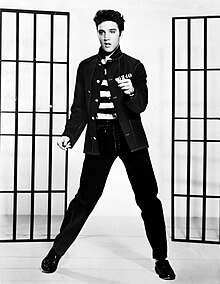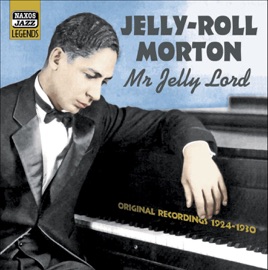Today I’m going to be writing about Ed Sheeran’s speedy rise to fame. I will discuss his come up along with some of his most notable accomplishments so far in his career, discuss some reasons why he has grown so massive, and break down a few of his songs that represent his genre style.
First, I’m going to start off with a little throwback to the beginning, Edward Christopher Sheeran or better know as Ed Sheeran was born February 17th, 1991 in Halifax, West Yorkshire, England [1]. His father can be credited to the main influence of exposing Sheeran to music, his father would take him to concerts to help provoke the musical creativity side of his brain. Some of his most notable musical influences are Van Morrison, Bob Dylan, Joni Mitchell, The Beatles, and Elton John [3]. Sheeran’s music started off playing guitar and singing in his family’s church as a youth, this was only the birth of his future legacy that I’m guessing none of his loved ones saw it coming [1]. Sheeran’s career of recording started out in 2004 – 2009 where he recorded and produced albums independently, he would perform these songs in small gigs and open mics around the United Kingdom [1]. In this time, a couple of these albums made top 100 on the UK charts, “No. 5 Collaborations Project” and “Loose Change” were by far his most successful hitting 46 and 90 [4]. His professional career started in 2011 where he was signed with Atlantic Records and produced three massive albums, “+” in 2011 which brought in 5 million in sales, “x” in 2014 which fetched 8.5 million in sales, and “÷” in 2017 that raised 12.3 million in sales [4]. At this point he’s only 27 and in my opinion is only in his infancy of his legacy.
Sheeran’s sound is best known by his acoustic guitar and vocals that sets him apart from the rap genre that dominated the top charts that he was coming up in. His music covers a broad spectrum of genres he is placed anywhere from rock, pop, and indie [1] to folk and hip hop [2] but the biggest genre he stays true to is pop in my opinion. Other than being an extraordinary musician the reason why I think he became so successful was the look of him and his relatability. Being in the pop genre he was an out cast from the typical bad boy look to many of the other artists, his ginger hair, colorful tattoos, and British accent set him as a goofy look for the American pop scene. From the wide variety of songs I listened to I can hear a story that he’s trying to portray to his audience, from the specific vocals to his thought out music videos he narrates relatable stories that could reminisce with just about any of his fans. None of his music came off as bragging or “flexing” about his accomplishments which I find that hard to get these days.
Photograph
The first song I would like to look at is “Photograph” which was a huge hit on his album “x”, this song brings aspects of folk pop. The aspects of the acoustic guitar, some back up piano brings out a melodic sound. The song has a verse/chorus form that keeps it catchy for an audience to sing along and become immersed into it. The music video below is a good representation of his progress through his music career, it displays home videos of Sheeran’s grind to where he has reached now.
Castle On The Hill
The second song is “Castle On The Hill” from his “÷” album. This song brings a little more of the typical pop song we’re use to today along with a folk-rock rhythm to it. The pace of it brings a lot more enthusiasm over the prior song with a spread of instruments that you see in an average rock band. Again, it holds the verse/chorus form that allows for an easy way to remember and sing along for fans. I believe the fast beat is what allowed this song to flourish across all medians.
Shape Of You
Lastly, we come to the behemoth, “Shape Of You” took the online world by storm, this is by far his most successful song. This song became the 3rd most viewed video on YouTube hitting 3.6 billion views [6] as of me writing this and holds the number one spot for most streamed song on Spotify at 1.8 billion [5]. This song was a new twist for Sheeran, on top of pop it brought a tropical house/dancehall vibe to his repertoire. The use of the malimba and drums brings out that Jamaican vibe in the melody which is the part that resonated with me the most. The small change in the instruments for a genre brought an intriguing new factor which I see as the basis of growing a new dimension.
I personally think Ed Sheeran will be part of the next textbook made for this class, his success in pushing the folk pop genre has reserved him a spot in my eyes. His goofy look and creative music style will get him into the hall of fame one day.
REFERENCES
[1] Erlewine, Stephen Thomas. “Ed Sheeran | Biography & History.” AllMusic. Accessed August 06, 2018. https://www.allmusic.com/artist/ed-sheeran-mn0002639628/biography.
[2] “Who Is Ed Sheeran? Everything You Need to Know.” The Famous People. April 04, 2018. Accessed August 08, 2018. https://www.thefamouspeople.com/profiles/ed-sheeran-29882.php.
[3] McCormick, Neil. “Ed Sheeran: ‘I Haven’t Got Used to the Screams’.” The Telegraph. August 03, 2011. Accessed August 08, 2018. https://www.telegraph.co.uk/culture/music/rockandpopfeatures/8679492/Ed-Sheeran-I-havent-got-used-to-the-screams.html.
[4] “Ed Sheeran Discography.” Wikipedia. August 03, 2018. Accessed August 07, 2018. https://en.wikipedia.org/wiki/Ed_Sheeran_discography.
[5] Bruner, Raisa. “Here’s Spotify’s Most Streamed Music of 2017.” Time. December 05, 2017. Accessed August 07, 2018. http://time.com/5050155/spotify-2017-most-streamed-music/.
[6] “15 of the Most Viewed YouTube Videos of All Time.” Influencer Marketing Hub. Accessed August 07, 2018. https://influencermarketinghub.com/15-most-viewed-youtube-videos-of-all-time/.










